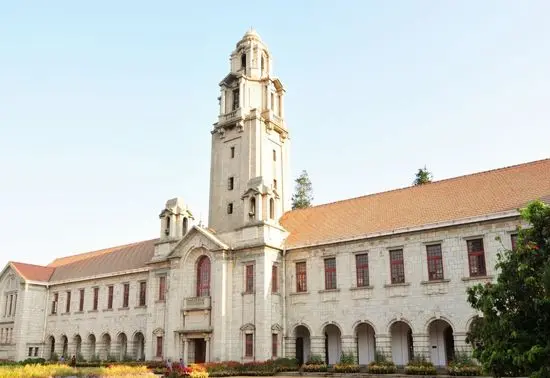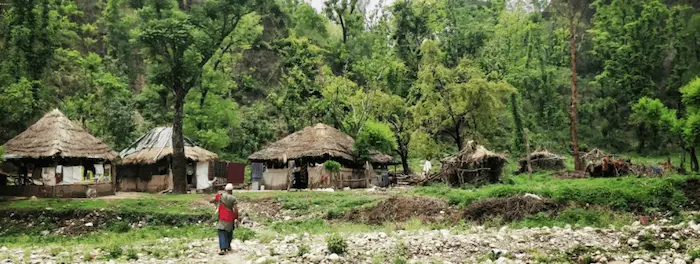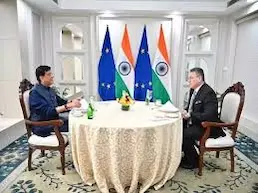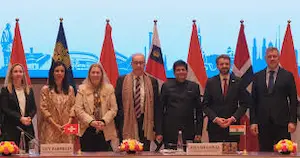1. National Institutional Ranking Framework (NIRF) – Governance

Why in News?
The NIRF 2024 Rankings introduced a new measure:
Negative scoring for institutions whose academic papers were retracted from journals (including citations) within the last 3 calendar years.
This move aims to promote research integrity and discourage manipulation in research outputs.
Background: What is NIRF?
- Launched by the Ministry of Education, Govt. of India in 2015.
- It is a national-level ranking system for higher education institutions.
- Aims to promote transparency, accountability, and quality enhancement in Indian higher education.
Key Parameters for Ranking:
NIRF evaluates institutions based on the following five broad parameters:
| Parameter | Description |
|---|---|
| 1. Teaching, Learning & Resources (TLR) | Infrastructure, faculty quality, and learning environment |
| 2. Research and Professional Practice (RP) | Research output, publications, patents |
| 3. Graduation Outcomes (GO) | Placement, higher studies, and graduation rate |
| 4. Outreach and Inclusivity (OI) | Regional and gender diversity, inclusion of weaker sections |
| 5. Perception (PR) | Stakeholder perception (peers, employers, public) |
Categories of Ranking:
NIRF releases rankings annually under the following categories:
- Overall
- University
- Engineering
- Management
- Medical
- Dental
- Law
- Agriculture and Allied Sectors
- Architecture, etc.
Institutions are grouped into:
- Category A – Institutes of National Importance, Central/State Universities, IITs, IIMs, NITs, etc.
- Category B – Affiliated institutions (private/public colleges).
Recent Highlights from NIRF 2024:
- Total Participation: Over 6,500 institutions – an 86% rise from the first edition.
Top Performers (2024):
| Category | Institution | Rank Trend |
|---|---|---|
| Overall | IIT Madras | 1st for 6 years (2019–2024) |
| University | IISc Bengaluru | 1st for 9 years (2016–2024) |
| Management | IIM Ahmedabad | 1st for 5 years (2020–2024) |
| Medical | AIIMS Delhi | 1st for 7 years (2018–2024) |
| Dental | Saveetha Institute, Chennai | 1st for 3 years |
| Agriculture | Indian Agricultural Research Institute | 1st for 2 years |
Significance of NIRF:
- Empowers students with informed decision-making in choosing institutions.
- Encourages institutions to improve academic & administrative practices.
- Facilitates benchmarking & international recognition.
- Promotes healthy competition and raises educational standards.
Recent Development – Negative Scoring:
- If an institution has retracted research papers, its NIRF score will be penalized.
- This promotes:
- Research accountability
- Reduction in fake/duplicate publications
- Strengthening of ethical research standards
Implications:
- Push for better research governance and quality over quantity.
- Institutions may invest more in ethical publication practices.
- Aligns with India’s goals for becoming a global education hub (e.g., NEP 2020 ambitions).
- Can impact funding and reputation of institutions.
Exam Connect – Possible Questions
Prelims
1. Which of the following parameters is not part of the National Institutional Ranking Framework (NIRF) evaluation criteria?
A. Teaching, Learning & Resources
B. Infrastructure Financing
C. Research and Professional Practices
D. Graduation Outcomes
Answer: B. Infrastructure Financing
2. Consider the following statements about NIRF:
1. It was launched by the Ministry of Human Resource Development in 2015.
2. IIT Madras has topped the NIRF Overall Category rankings for six consecutive years.
3. The framework considers cross-border student mobility as a ranking parameter.
Which of the above statements is/are correct?
A. 1 and 2 only
B. 2 and 3 only
C. 1 and 3 only
D. 1, 2 and 3
Answer: A. 1 and 2 only
(Note: Cross-border mobility is not a NIRF parameter; it is considered in global rankings like QS and THE.)
Mains
1. Discuss the role of the National Institutional Ranking Framework (NIRF) in reforming India’s higher education landscape. Highlight recent changes introduced in the NIRF 2024 rankings.
2. How can institutional rankings contribute to improving educational outcomes in India? Analyze the strengths and limitations of the NIRF methodology.
2. Directive on Sugar and Salt Labelling in Packaged & Common Foods – Governance
Why in News?
The Ministry of Health and Family Welfare has directed that sugar and oil content in popular Indian snacks and fast foods like samosas, vada pav, kachoris, pizzas, and burgers must be clearly displayed in:
- Government offices and meeting rooms
- Cafeterias and public institutions
- Even on government stationery
This initiative is part of a wider effort to combat rising lifestyle diseases and to promote health awareness through informative labelling.
Key Measures Announced:
- Mandatory Display Boards for:
- Total sugar, oil/fat, and salt content of commonly consumed foods.
- Placement in public areas: offices, lobbies, schools, cafeterias, meeting rooms.
- Warning Labels on packaged food items to indicate:
- High sugar/salt/fat content.
- Nutritional Value Labelling:
- Nutrient levels measured per 100 grams through lab analysis.
- Focus on sugar, saturated fat, and salt.
- Incorporation of Guidelines from:
- 2024 Dietary Guidelines for Indians
- World Health Organization (WHO) standards
- Public Health Messaging via government communications to reinforce behavioural change.
Background & Significance:
Rise of Non-Communicable Diseases (NCDs):
- NCDs account for 66% of deaths in India.
- Common NCDs: heart disease, diabetes, cancer, and chronic respiratory diseases.
- Lifestyle factors like poor diet, sedentary life, and processed food intake are major contributors.
- Especially affects people aged 30+.
Nutrition Science:
- Foods are assessed in laboratories for macronutrients and critical contents.
- High Fat, Sugar, and Salt (HFSS) foods are identified as risky, particularly for children.
Policy Framework and Campaigns:
| Initiative | Description |
|---|---|
| Eat Right India | FSSAI-led campaign promoting food safety, healthy eating, and sustainability |
| Fit India Movement | Encourages active lifestyles and balanced diets |
| 2024 Dietary Guidelines for Indians | Categorizes HFSS foods, suggests intake limits |
| WHO Recommendations | Emphasize clear food labelling and reduction of hidden sugars/salts |
Implications:
Positive Impacts:
- Greater public awareness of hidden sugars/oils in everyday foods.
- Potential behavioural shift towards healthier eating, especially in schools and workplaces.
- Helps align India with global best practices in nutrition and public health.
Challenges:
- Implementation in private sectors and street vendors may lag.
- May need public education campaigns to interpret nutritional data correctly.
Exam Connect – Possible Questions
Prelims
1. The 2024 Dietary Guidelines for Indians primarily focus on which of the following categories of food?
A. Organic foods only
B. High Fat, Sugar, and Salt (HFSS) foods
C. Genetically modified foods
D. Vitamin-fortified processed foods
Answer: B. High Fat, Sugar, and Salt (HFSS) foods
2. Which of the following is not a component of the Government of India’s Eat Right India campaign?
A. Front-of-pack nutrition labelling
B. Promotion of locally grown foods
C. Compulsory rationing of sugary foods
D. Public awareness on balanced diets
Answer: C. Compulsory rationing of sugary foods
Mains
1. Discuss the significance of nutritional labelling in combating non-communicable diseases in India. How effective are recent government directives in promoting public health awareness?
2. India is witnessing a rise in lifestyle-related disorders due to dietary habits. Critically analyze the role of awareness campaigns like ‘Eat Right India’ and the latest food labelling guidelines in addressing this issue.
3. Raji Tribe – Cultural Identity and Social Challenges – Indian Society

Why in News?
The absence of a female candidate for the village pradhan (head) post in Khetar Kanyal village (Pithoragarh district, Uttarakhand), predominantly inhabited by the Raji tribe, has sparked concern about gender imbalance and social exclusion in this marginalized tribal community.
Who are the Raji Tribe?
| Feature | Description |
|---|---|
| Status | Recognized as a Particularly Vulnerable Tribal Group (PVTG) |
| Region | Primarily in Uttarakhand (Pithoragarh, Champawat) and western Nepal |
| Language | Speak Bat-Kha, a Tibeto-Burman dialect |
| Traditional Lifestyle | Known as forest and cave dwellers; depend on forest produce |
| Population | Among the smallest indigenous groups in India |
Traditional Livelihood:
- Forest Gathering: Honey, wild game, fish, tubers
- Agriculture (recent adaptation): Cultivation of rice, maize, barley
- Handicrafts: Skilled in weaving, woodcraft, and basketry
- Dependence on seasonal forest cycles has gradually shifted to semi-settled agriculture due to state interventions.
Religion & Beliefs:
- Practice Hinduism, with deep animistic elements and nature worship.
- Belief systems are tied to local deities, forests, and natural elements.
- Rituals often blend mainstream Hindu practices with tribal customs.
Social Structure:
- Society is clan-based with distinct traditions per clan.
- Elders and local councils (Panchayats) play key roles in governance and dispute resolution.
- Low female representation in leadership suggests patriarchal trends or social marginalization of women.
Architecture & Habitat:
- Homes made of mud, stone, and wood – adapted for flood protection and wildlife threats.
- Typically elevated to suit hilly terrain and protect from climatic extremes.
Current Challenges:
| Challenge | Impact |
|---|---|
| Lack of political representation | No women leaders, underrepresentation in governance |
| Economic insecurity | Transitioning from forest economy to agriculture leads to instability |
| Cultural erosion | External influences and lack of recognition threaten traditional practices |
| Education & health | Limited access in remote tribal belts |
| Gender inequality | Highlighted by the lack of female leadership candidates |
Exam Connect – Possible Questions
Prelims
1. The Raji tribe, recently in news, primarily resides in which of the following states?
A. Arunachal Pradesh
B. Jharkhand
C. Uttarakhand
D. Odisha
Answer: C. Uttarakhand
2. Which of the following features are true about the Raji tribe?
1.They are classified as a Particularly Vulnerable Tribal Group (PVTG).
2.They speak a Dravidian language.
3.They traditionally relied on forest-based livelihood.
4.They are mainly found in the Western Ghats.
Select the correct answer:
A. 1 and 2 only
B. 1 and 3 only
C. 2 and 4 only
D. 1, 2 and 3 only
Answer: B. 1 and 3 only
(Note: They speak Bat-Kha, a Tibeto-Burman language, and are found in the Himalayas, not the Western Ghats.)
Mains
1. Who are the Raji tribe, and why are they classified as a Particularly Vulnerable Tribal Group (PVTG)? Discuss the socio-economic challenges they face in contemporary India.
2. Critically examine the issue of gender imbalance and lack of representation in tribal societies, with reference to the Raji tribe of Uttarakhand.
4. Exercise Prachand Shakti – Modern Warfare & Technological Integration – Defence, Security

Why in News?
The Indian Army recently conducted a high-intensity military demonstration titled “Exercise Prachand Shakti” at the Kharga Corps Field Training Area in Meerut, Uttar Pradesh.
The event focused on showcasing the integration of disruptive technologies into Strike Corps infantry operations.
Objective of the Exercise:
- To enhance the agility, lethality, and survivability of infantry formations in deep offensive operations.
- To demonstrate the use of emerging and disruptive technologies in real-time battlefield scenarios.
Key Features of the Exercise:
| Feature | Description |
|---|---|
| Location | Kharga Corps Field Training Area, Meerut, Uttar Pradesh |
| Units Involved | Indian Army Strike Corps, Infantry Units |
| Technology Demonstrated | UAVs, AI-based systems, autonomous platforms, loitering munitions |
| Focus Areas | Real-time reconnaissance, decision-making speed, target acquisition, minimal human risk |
| Theme Year | Part of the Indian Army’s “Year of Tech Absorption” initiative |
Disruptive Technologies Showcased:
- Unmanned Aerial Vehicles (UAVs):
- Used for surveillance, intelligence gathering, and precision targeting
- Reduced risk to human soldiers
- AI-enabled Command & Control Systems:
- Faster battlefield decisions based on live data
- Improves communication between units and commanders
- Loitering Munitions (Suicide Drones):
- Hover over target area and engage when enemy detected
- Cost-effective and efficient for soft targets
- Autonomous Ground Platforms:
- Robotic mules, mine detectors, logistics carriers for combat support
Significance of Exercise Prachand Shakti:
- Signals India’s transition towards network-centric warfare.
- Prepares infantry units for hybrid and high-intensity conflicts.
- Aligns with global military trends, especially visible in modern conflicts (e.g., Ukraine–Russia).
- Strengthens India’s Atmanirbhar Bharat mission by integrating civilian innovations into defence.
Broader Context – “Year of Tech Absorption”:
- A strategic initiative of the Indian Army for 2024–25.
- Objective: Absorb dual-use technologies from India’s growing civil-tech ecosystem.
- Enhances the military’s adaptability to rapidly changing combat environments.
Exam Connect – Possible Questions
Prelims
1. Exercise Prachand Shakti, recently in the news, was conducted by:
A. Indian Navy in the Arabian Sea
B. Indian Army’s Strike Corps in Meerut
C. Indian Air Force in the Eastern Command
D. DRDO in collaboration with the Indian Army
Answer: B. Indian Army’s Strike Corps in Meerut
2. Which of the following technologies were demonstrated during Exercise Prachand Shakti?
1.AI-enabled systems
2.Hypersonic missiles
3.Loitering munitions
4.Unmanned Aerial Vehicles (UAVs)
Select the correct answer:
A. 1 and 2 only
B. 2 and 3 only
C. 1, 3, and 4 only
D. 1, 2, 3, and 4
Answer: C. 1, 3, and 4 only
Mains
1. Discuss the role of disruptive technologies such as AI and UAVs in transforming modern military operations. Illustrate with reference to Exercise Prachand Shakti conducted by the Indian Army.
2. The Indian Army’s ‘Year of Tech Absorption’ initiative aims to bridge the gap between civilian innovation and military needs. Examine the benefits and challenges of such military-modernization strategies.
5. India–EU Free Trade Agreement (FTA) – Progress on Digital Trade, Services & Investment – International Relations

Why in News?
India and the European Union (EU) have achieved notable progress in the 12th round of negotiations on the proposed India–EU Free Trade Agreement (FTA).
Key breakthroughs include:
- Digital Trade Chapter finalized in principle
- Significant progress in Services and Investment chapters
These steps bring the long-pending trade pact closer to finalization, with major implications for data governance, foreign investment, and bilateral economic ties.
Background: India–EU Trade Relations
| Area | Description |
|---|---|
| EU as a Trade Partner | Among India’s largest trade partners, accounting for ~11% of India’s total trade |
| FTA Talks Start Year | 2007, revived in 2022 after a long hiatus |
| Key Trade Areas | Pharmaceuticals, automobiles, machinery, IT services, agri-products, apparel |
| Total Bilateral Trade | Over €120 billion (2024) |
Key Areas of Progress:
1. Digital Trade Chapter
- Finalized in principle
- Covers:
- Cross-border data flows
- Digital services and e-commerce
- Cybersecurity and online privacy
- Vital for India’s IT & digital economy, aiding global integration
- Allows Indian startups, fintechs, and IT firms to tap into the EU market
2. Cross-Border Data Flow vs. Data Localization
- EU pushes for free flow of data to boost digital trade
- India firmly maintains:
- Sovereignty over data
- Data localization policies (e.g., RBI’s 2018 mandate for local storage of financial data)
- Protection of privacy, national security, and digital autonomy
3. Services Sector
- EU aims to eliminate “discriminatory barriers” for its companies (especially in legal, financial, telecom services)
- India seeks greater mobility of professionals and eased visa norms
- High stakes for India’s IT, BPO, education, and financial services
4. Investment & Dispute Resolution Mechanism
- Ongoing work on a comprehensive investment chapter
- Negotiations focus on:
- State-to-state dispute resolution
- Balancing investor rights with India’s regulatory autonomy
- EU remains cautious due to India’s 2016 decision to terminate Bilateral Investment Treaties (BITs)
Strategic Significance:
| Stakeholder | Benefit |
|---|---|
| India | Access to high-value EU market, investment inflows, global positioning in digital economy |
| EU | Access to Indian services market, digital trade expansion, supply chain diversification |
| Global Trade | Push toward a rules-based order in digital trade, data governance, and sustainable investments |
India’s Balancing Act:
- Supports economic openness while defending sovereignty over data
- Strives for ‘digital strategic autonomy’ – resisting pressure to fully liberalize sensitive domains
- Aligns with India’s broader policies:
- Digital India
- National Data Governance Policy
- Atmanirbhar Bharat
Exam Connect – Possible Questions
Prelims
1. The Digital Trade chapter, recently finalized in the India–EU FTA talks, primarily deals with:
A. Agricultural subsidies
B. Cross-border flow of goods
C. Cross-border data flows and e-commerce
D. Defence technology sharing
Answer: C. Cross-border data flows and e-commerce
2. Which of the following is NOT a current member of the European Union
A. Germany
B. France
C. Switzerland
D. Italy
Answer: C. Switzerland
(Note: Switzerland is a member of EFTA, not the EU.)
Mains
1. The India–EU Free Trade Agreement (FTA) reflects a convergence of economic ambitions and regulatory caution. Discuss the strategic significance of the digital trade and services components in the ongoing negotiations.
2. India’s insistence on data localization presents both opportunities and challenges in global trade talks. Analyze this in the context of the India–EU FTA and India’s digital sovereignty strategy.
6. India–European Free Trade Association (EFTA) Free Trade Agreement – Economy

Why in News?
The Union Minister of Commerce & Industry has announced that the India–EFTA Free Trade Agreement (FTA) will come into effect from 1st October 2025.
This agreement marks a major milestone in India’s efforts to diversify trade partnerships beyond traditional players like the EU and the US.
What is EFTA?
| Feature | Details |
|---|---|
| Full Form | European Free Trade Association |
| Established | 1960 as an alternative to the European Economic Community (now EU) |
| Current Members | Iceland, Liechtenstein, Norway, Switzerland |
| Headquarters | Geneva, Switzerland |
| Purpose | Promote free trade and economic integration globally and among members |
| Legal Instruments | EEA Agreement (for 3 members), EFTA Court, EFTA Surveillance Authority |
Background: EFTA’s Global Role
- EFTA has signed over 60 FTAs with countries and regions including:
- European Union
- Chile, South Korea, Canada, Indonesia, etc.
- It is not a customs union like the EU – members conduct their own trade policy.
- Members (except Switzerland) are also part of the European Economic Area (EEA).
India–EFTA FTA: Key Features & Significance
| Aspect | Impact |
|---|---|
| Trade Expansion | Boost in bilateral trade with high-income, tech-driven EFTA nations |
| Investment Opportunities | Expected inflow of technology, capital, and high-end services from Switzerland and Norway |
| Market Access | Enhanced access for Indian pharma, textiles, IT, and agro-products |
| Knowledge Sharing | Collaboration in education, R&D, clean energy, and sustainability |
| Balanced Growth | Agreement includes provisions on capacity building, skills development, and sustainable practices |
| Geostrategic Diversification | Reduces India’s over-dependence on a few major trade blocs |
Institutional Framework of EFTA:
| Institution | Function |
|---|---|
| EFTA Council | Top decision-making body – governs trade policy |
| EFTA Secretariat (Geneva) | Provides technical & logistical support |
| EFTA Surveillance Authority | Ensures compliance with EEA rules (for Iceland, Liechtenstein, Norway) |
| EFTA Court (Luxembourg) | Resolves legal disputes related to EEA |
Impact on Indian Economy:
- Diversifies export destinations, especially for MSMEs and high-value services
- Supports Make in India and Startup India through technology partnerships
- Complements India’s “Look West” and “Global South” trade strategy
- Facilitates supply chain resilience through trade with politically stable, innovation-led economies
Exam Connect – Possible Questions
Prelims
1. The European Free Trade Association (EFTA), recently in the news, is headquartered in
A. Brussels
B. Geneva
C. Vienna
D. Luxembourg
Answer: B. Geneva
2. Which of the following countries is not a member of the European Free Trade Association (EFTA)?
A. Norway
B. Switzerland
C. Sweden
D. Liechtenstein
Answer: C. Sweden
(Note: Sweden is a member of the EU, not EFTA.)
Mains
1. The India–EFTA Free Trade Agreement reflects a strategic shift in India’s global trade engagement. Discuss the potential benefits and challenges associated with this agreement.
2. Compare and contrast the European Union (EU) and the European Free Trade Association (EFTA) as India’s trading partners. How does India’s engagement with EFTA complement its broader foreign trade policy?

